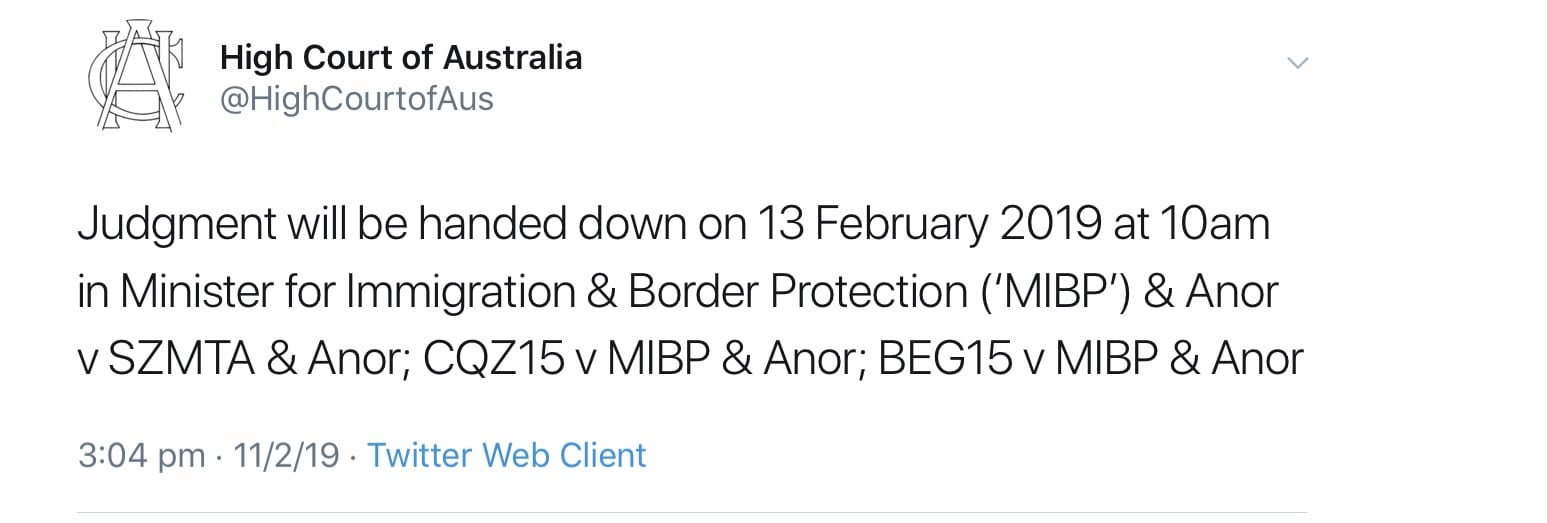The High Court has unanimously dismissed an appeal against the Supreme Court of the Australian Capital Territory, holding that the appellant, Mr Lewis, was not entitled to substantial damages for wrongful imprisonment because, while the decision to return him to imprisonment by the ACT’s Sentencing Administration Board had been invalid, he would otherwise have been lawfully returned to imprisonment in any case.
Facts
Mr Lewis was sentenced to a term of 12 months’ imprisonment for recklessly or intentionally inflicting actual bodily harm on another by smashing a glass into the face of another man during a fight.
He was sentenced to periodic detention on weekends. He failed on four times to attend periodic detention, and was notified by the Sentence Administration Board of an inquiry, but he did not read any of the letters he was sent in regard to it, and chose not to attend it. The Board cancelled Mr Lewis’ periodic detention, as it was required to do. There was no discretion, and the cancellation was mandatory once an offender had failed twice to attend periodic detention. (The legislation, the Crimes (Sentence Administration) Act 2005 (ACT), is described in detail at [7] – [12] of Kiefel CJ and Keane J’s judgment and [53] – [58] of Gordon J’s judgment). Once periodic detention had been cancelled the offender was obliged to serve out the remainder of his sentence by way of full-time detention. The Board then decided it had been inquorate during the first inquiry, and invited Mr Lewis to make submissions at a second inquiry. Again, Mr Lewis failed to attend.
Mr Lewis was then arrested and imprisoned for 82 days. In separate proceedings, Mr Lewis successfully challenged the cancellation of his periodic detention on the basis that he had been denied procedural fairness by the Board, and thus the decision of the Board was invalid. The trial judge found that the Board had attempted to inform Mr Lewis of the hearings, but he could not be entirely sure, and consequently, procedural fairness had not been accorded (this decision was described by the Court of Appeal of the Australian Capital Territory as “illogical”).
Prior to his challenge to the Board’s determination, Mr Lewis was granted bail pending the hearing of that challenge and was never required to serve his initial sentence of periodic detention. Mr Lewis sought damages from the Australian Capital Territory for false imprisonment for the 82 days of imprisonment that he had served before being granted bail.
The trial judge assessed damages for a false imprisonment of this nature at $100,000, but awarded only nominal damages because, even if Mr Lewis had not been denied procedural fairness, the periodic detention order would have been cancelled and Mr Lewis would have been imprisoned full-time. The Full Court of the Supreme Court of the Australian Capital Territory upheld the trial judge’s decision. Mr Lewis appealed to the High Court of Australia.
Mr Lewis attempted to argue that he was entitled to substantial damages from the Australian Capital Territory on three bases:
- That he was entitled to damages for infringement of his right to liberty because the tort of false imprisonment had been committed;
- That he was entitled to “vindicatory damages” to reflect the infringement of his human right to liberty; and
- That he was entitled to compensatory damages for the non-pecuniary losses he sustained during the 82 days.
He failed on all counts. Kiefel CJ and Keane J delivered a joint judgment, and Gageler, Gordon and Edelman JJ all delivered separate judgments.
As Edelman J notes at [137], Mr Lewis’s arguments with regard to damages for infringement of the right to liberty and with regard to “vindicatory damages” were functionally identical, because they both sought substantial damages for infringement of the right to liberty.



